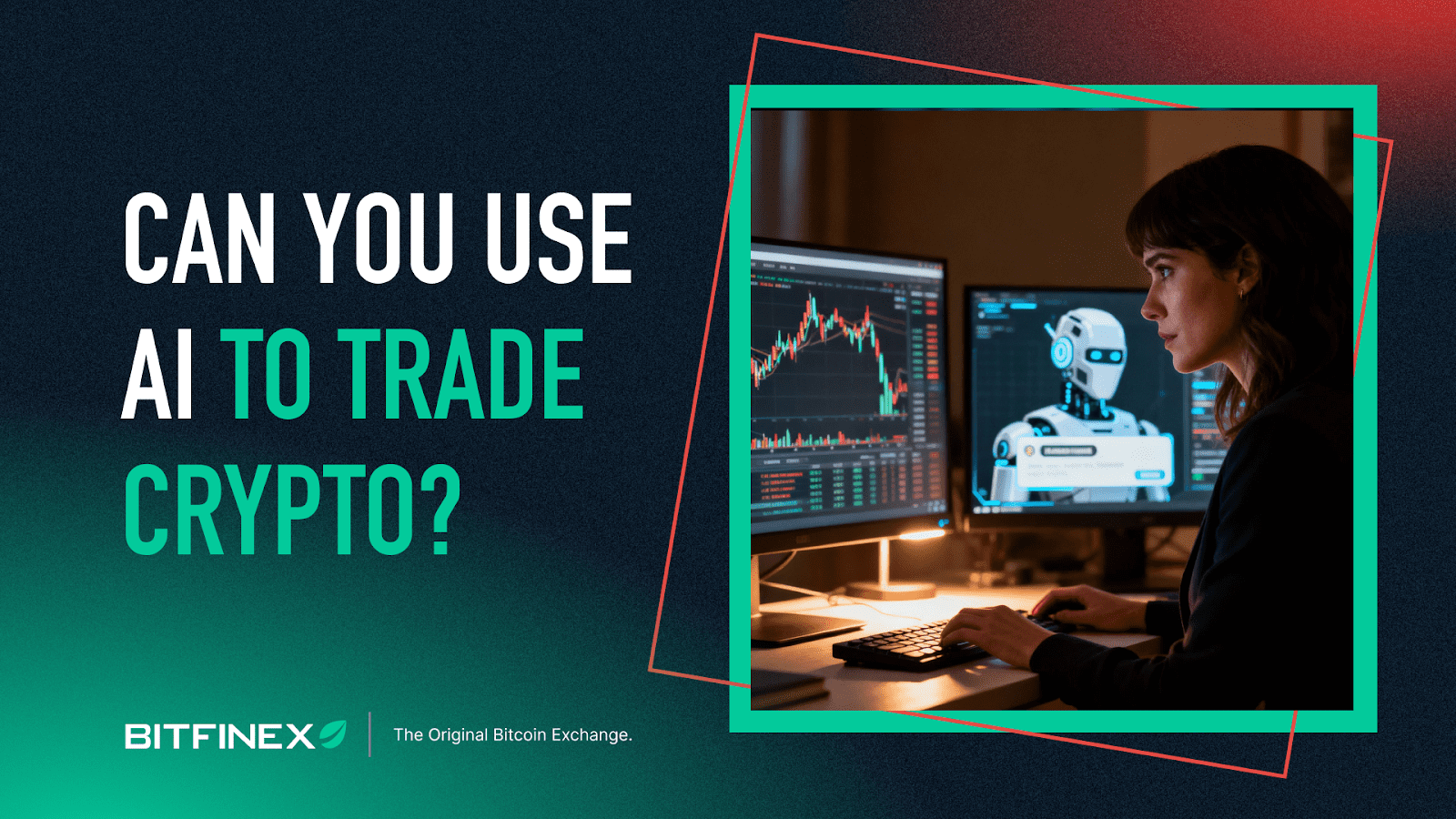
10 Oct Can You Use AI to Trade Crypto?
AI trading tools are designed to enhance decision-making by applying machine learning and statistical models to market data, enabling faster pattern recognition, signal generation, and in some cases, automated execution. They span a broad range of functions, from real-time scanners and sentiment analysis platforms to backtesting environments and no-code automation systems, serving both digital asset and traditional financial markets. Traders typically integrate these tools step by step, using them to screen opportunities, validate strategies, and automate routine tasks while retaining control over risk management. While their effectiveness depends on factors like data quality, model robustness, and oversight, AI tools are rapidly evolving, moving beyond hype to become a core part of systematic, scalable, and disciplined trading practices.
Are AI Trading Tools All Hype or Truly Something Special?
AI trading tools apply machine learning and statistical modelling to market data in order to surface patterns, generate signals, and, in some cases, execute trades automatically. Rather than promising certainty, they aim to widen a trader’s information set, scanning price action, order books, news, and sentiment far faster than manual workflows. Used well, they can help reduce reaction time, enforce discipline, and remove some emotional bias from decision-making, while still leaving risk management and strategy selection to the human in control of the loop.
The ecosystem spans several categories. Signal generators and scanners analyse markets in real time to flag setups with defined entry/exit logic. Pattern-recognition and sentiment tools digest charts, headlines, and social feeds to rate the likely impact on assets. Backtesting and research environments let traders codify ideas and evaluate them on historical data, while no-code strategy builders make simple automation accessible to non-programmers. Full-stack platforms combine these capabilities with brokerage or exchange connectivity to support alerts, paper trading, and hands-off execution. Offerings exist for both digital assets and traditional markets, with some products more focused on crypto exchanges and others built around equities, ETFs, options, FX, or futures.
In practice, traders tend to integrate AI incrementally rather than handing over the wheel. A common path for traders integrating AI tools is to use AI screeners to narrow a large universe of data, apply backtesting to validate rules, deploy alerts or bots to enforce those rules, and add safeguards such as max drawdown limits, position sizing, and time-of-day filters. In crypto, where markets run 24/7 and microstructure changes quickly, bots can handle routine tasks (rebalance, hedge, market-making bands) while humans oversee regime shifts. In equities or futures, AI can assist with event-driven scans, options flow analysis, or intraday momentum filters, with execution routed through regulated brokers and pre-trade risk checks.
Effectiveness still hinges on data quality, model robustness, and risk control. Overfitting, regime changes, and latency can erode backtested edges. Connectivity or oracle failures can disrupt automated crypto execution, and regulations, costs, and taxes differ across venues. Sensible guardrails include walk-forward testing, out-of-sample validation, kill-switches, capped leverage, and clear rules for pausing systems after abnormal losses. AI trading tools are still in their infancy, but they’re rapidly evolving, improving in accuracy, scope, and usability with each new data source and model breakthrough. Framed this way, AI is not a shortcut to guaranteed returns but a set of tools that, when combined with sound process and risk management, can make both digital-asset and traditional-market strategies more systematic, scalable, and repeatable.
What AI Trading Tools are Currently Available?
Here’s a quick overview of the most popular AI trading tools available at time of writing. Keep in mind that this is just a surface level overview of popular tools in use today, so be sure to do your own due diligence on any AI trading tool you plan to implement into your trading workflow.
RockFlow
RockFlow combines AI with social and institutional-grade investing tools, providing portfolio optimisation, sentiment analysis, and automated insights across crypto, equities, and ETFs. Its mobile-first design makes it approachable for newer investors while still offering depth for more experienced users, and it incorporates features like TradeGPT and personalised investment recommendations.
AlgosOne
AlgosOne offers institutional-level algorithmic trading capabilities to retail users, supporting crypto, forex, and stock markets. It focuses heavily on backtesting, analytics, and real-time trade signals, and it also features a marketplace where traders can copy or license community-driven AI strategies.
Trade Ideas
Trade Ideas is an established platform geared toward active day traders, powered by its proprietary AI engine “Holly.” The system runs millions of backtests daily across dozens of strategies to deliver a handful of high-probability trade signals, with tools for real-time scanning, alerts, and automated execution via brokerage integrations.
AInvest
AInvest is a user-friendly AI trading app designed for passive investors, with predictive analytics, automated execution, and robo-advisory features for crypto, stocks, and ETFs. Its “AI Radar” tool helps identify market shifts before they occur, while portfolio rebalancing and automation make it accessible to users with limited trading experience.
Tickeron
Tickeron specialises in AI-powered pattern recognition and trade forecasting, scanning real-time data across crypto, stocks, and options. It provides confidence levels for predictions and includes AI Robots, pre-built algorithmic strategies with audited track records, alongside portfolio-building tools that appeal to both active traders and longer-term investors.
Streetbeat
Streetbeat applies AI to curate portfolios and generate strategy recommendations based on real-time institutional-grade data, including insights from hedge funds and analysts. With a focus on automation and simplicity, it suits investors who want a hands-off approach but still benefit from adaptive strategies, particularly across equities and ETFs, with recent expansion into crypto.
WunderTrading
WunderTrading is a crypto-focused platform offering AI-driven bots, copy trading, and strategy integration with tools like TradingView. It supports multi-exchange connectivity, allowing traders to automate or mirror strategies from experienced users, making it versatile for both novice and professional participants.
Kavout
Kavout is built around its AI engine “Kai,” which ranks and scores investment opportunities across equities and crypto. It uses quant-style models and alternative datasets to provide systematic insights, appealing to institutional investors and retail traders seeking structured, data-driven decision support.
TrendSpider
TrendSpider is an AI-driven technical analysis platform that automates charting, trendline detection, and candlestick recognition across multiple timeframes. It includes backtesting, market scanning, and automated execution tools, enabling traders to streamline technical analysis, reduce manual errors, and build strategies without coding.
The Importance of Learning How to Use AI Trading Tools
Artificial intelligence has quickly moved from being a novel experiment in financial markets to a transformative force shaping how trading is conducted. Much like the rise of algorithmic trading in the late 20th century, which permanently altered market structure and execution strategies, AI is embedding itself as a core component of decision-making and risk management. Its ability to process vast amounts of data, identify subtle patterns, and adapt strategies in real time provides an edge that is increasingly difficult to ignore. As a result, traders who fail to engage with AI-driven tools may find themselves at a disadvantage in markets that are becoming faster, more data-driven, and less forgiving of traditional discretionary approaches.
This shift means that learning how to use AI tools is not just an option, but an essential skill for traders and investors going forward. From automated market scanning and predictive analytics to strategy backtesting and execution, AI is changing both the speed and precision of market participation. Just as algorithmic trading once redefined what it meant to compete effectively in financial markets, AI is now redefining the boundaries of analysis and automation. Adapting to this new reality will require traders to understand the strengths and limitations of AI tools, integrate them into their strategies thoughtfully, and remain aware of how these technologies are reshaping market dynamics on a global scale.



